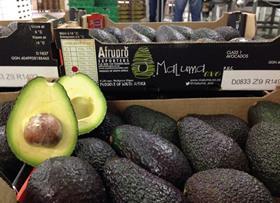
The global fresh fruit export market is fiercely contested as countries compete for these lucrative markets. As shown by the South African fresh fruit industry, postharvest innovation is critical in ensuring that South African exports remain globally competitive and grow its market share.
The Post-Harvest Innovation (PHI) Programme, an initiative of the Fresh Produce Exporters’ Forum (FPEF), funded by the Department of Science and Technology in partnership with the fruit industry associations, has been instrumental in addressing global competitiveness challenges.
Research carried out under the PHI Programme focuses on the development and improvement of postharvest technologies, through a series of collaborative projects between universities, research organisations and industry associations, the latter including the Subtropical Growers’ Association, Hortgro Science, the Pomegranate Producers’ Association of South Africa, South African Table Grape Industry, Citrus Research International, Cape Flora SA, Tomato Growers’ Organisation and the Onions Producers’ Association.
The Programme has been successful in rolling out 35 new projects during its third phase of operation between 2013 – 2017, ensuring a growing level of innovation in the industry. Export statistics show that fresh fruit exports have consistently grown since 2015 to 2017 from R30.2bn to R40.5bn, which amounts to a 34 per cent growth over the two year period. Linked to these projects, the PHI Programme also increased high level human capacity to support future industry growth, having supported the training of 40 post graduate students and 6 postdoctoral students related to these projects.
Consider the case of the locally developed avocado cultivar, called 'Maluma'. Thanks to research that showed how fruit damage could be limited through rapid cooling after harvesting, this avocado cultivar is now being exported in much higher volumes than before. With only 10 per cent less fruit damage, the avocado industry saves more than R3.3m a year. Improved production and harvesting practices have furthermore led to higher prices for the commodity. Export customers now pay R50 per carton more for better quality fruit, yielding an additional R15m on 300 000 cartons exported per year.
Research into decreasing damage suffered by 'Star Ruby' grapefruit during cold storage enroute to export destinations in the USA and the East has led to a 21-fold increase in export volumes, from 89 thousand cartons per year to 1.866m cartons. Over the same period, the income from 'Star Ruby' grapefruit exports increased from R68m to R323m per year.
Similarly, the market for pomegranates is booming. South Africa competes with countries such as Chile, Australia, Peru and Argentina to supply the off-season demand for pomegranates in the Northern Hemisphere from March until May. However, pomegranate exports were faced with fungal diseases, such as black heart disease, leading to post-harvest losses of up to 30 per cent. The development of substantial new knowledge on production and handling protocols has enabled producers to increase the volume of sellable fruit as well as its competitiveness among Southern Hemisphere exporting countries. The industry estimates a benefit of between R20m and R45m in the coming season due to improved quality and reduced incidence of decay.
“In many cases, research has found that fairly simple changes can have far-reaching and profitable impacts,” says Anton Kruger, the CEO of the FPEF. “The National Development Plan identifies agriculture as one of the critical growth areas in the economy, and the PHI Programme contributes to this imperative through initiating R&D projects that pack a mighty punch for return on investment.”



